第53章 MONEY OR SIMPLE CIRCULATION(34)
The volume of money in circulation as means of payment is first of all determined by the amount of payments due,that is by the aggregate prices of the commodities which have been sold,not of the commodities that are to be sold as is the case with simple money circulation.But the amount thus determined is subject to modification by two factors:first by the velocity with which a coin repeats the same operation,or the number of payments which constitute a dynamic chain of payments.A pays B,then Bpays C and so on.The velocity with which the same coin can act repeatedly as means of payment depends,on the one hand,on the interconnection of the commodity-owners'relations as creditors and debtors,in which the same commodity-owner who is a creditor in relation to one person is a debtor in relation to another,and so forth;and on the other hand,on the period of time separating the various dates on which payments are due.The series of payments,or of first metamorphoses carried out subsequently,is qualitatively different from the series of metamorphoses represented by the movement of money as means of circulation.The second series does not only appear in temporal succession,but it comes into being in this way.A commodity is turned into money,then into a commodity again,thus making it possible for another commodity to be turned into money,and so on:in other words,a seller becomes a buyer and another commodity-owner thereby becomes a seller.This sequence arises fortuitously in the course of commodity exchange itself.But the fact that the money which A pays to B is then used by B to pay C,and then by C to pay D,etc.,and that moreover payments rapidly succeed one another --this external relation is but a manifestation of a previously existing social relation.The same coin passes through various hands not because it acts as means of payment;but it is passed on as means of payment because these hands have already been joined.
A far more extensive integration of the individual into the process of circulation is accordingly signified by the velocity of money as means of payment,than by the velocity of money as coin or means of purchase.
The aggregate of prices of simultaneous,and therefore spatially coexisting,purchases and sales is the limit beyond which the velocity of currency cannot be substituted for its volume.But this barrier does not exist when money functions as means of payment.If payments falling due simultaneously are concentrated at one place,which occurs at first spontaneously at the large foci of commodity circulation,then payments offset one another like negative and positive quantities:A who has to pay B may receive a payment from C at the same time,and so on.The amount of money required as means of payment thus depends not on the aggregate amount of payments which are due to be made simultaneously,but on the degree of their concentration and on the size of the balance left over after the negative and positive amounts have been offset against one another.Special devices for this type of balancing arise even if no credit system has been evolved,as was the case in ancient Rome.But consideration of them is no more relevant here than is consideration of the usual settlement dates,which in every country become established among people of certain social strata.Here we shall merely note that scholarly investigations of the specific influence exerted by these dates on the periodic variations in the quantity of money in circulation have been undertaken only in recent times.